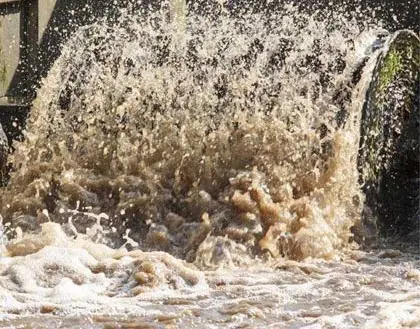Sewage water
Wastewater is a term used to describe any water that has been used and discarded. They come from various sources, including homes, businesses, and industries. Wastewater contains a wide range of contaminants, including chemicals, pathogens and organic matter.
In this article, we will explore the different types of wastewater, how it is treated, and the importance of proper management.
Types of wastewater
There are several types of wastewater, each with its own unique characteristics and treatment requirements. The most common types of wastewater include:
Sewage treatment
Wastewater treatment is the process of removing contaminants from wastewater so that it is safe for discharge into the environment. The treatment process typically involves several stages, including:
During primary treatment, large solids are removed from wastewater through a process called sedimentation. The wastewater is then sent to a secondary treatment facility.
Secondary treatment involves the use of biological processes to remove organic matter and pathogens from wastewater. This is usually done by using bacteria and other microorganisms.
Tertiary treatment is the final stage of the treatment process and involves the removal of any remaining contaminants from the wastewater. This includes the use of chemicals, filtration and disinfection.
Importance of proper wastewater management
Proper wastewater management is essential to protect public health and the environment. Improperly treated wastewater contains harmful pollutants that pollute waterways and harm aquatic life.
It also poses a risk to human health if it is not treated properly before being released into the environment.
Treating wastewater for reuse helps address water scarcity issues in regions where water is a scarce commodity.
In summary, proper wastewater management is crucial to prevent water pollution, ensure the availability of good quality water and promote sustainable development.

Wastewater treatment technologies
There are several wastewater treatment technologies available, each with its own advantages and disadvantages. Some of the most common wastewater treatment technologies are activated sludge, membrane bioreactors, reverse osmosis or electrocoagulation.
Activated sludge is a biological treatment process that uses microorganisms to break down organic matter in wastewater. The process involves mixing wastewater with a mixture of microorganisms and oxygen in a tank. Microorganisms consume organic matter in wastewater, producing carbon dioxide and water as byproducts.
Membrane bioreactors are a type of activated sludge process that uses a membrane to filter solids and microorganisms from wastewater. The membrane acts as a physical barrier, allowing only clean water to pass through.
Reverse osmosis is a process that uses a semipermeable membrane to remove contaminants from wastewater. The process involves applying pressure to the wastewater, forcing it through the membrane. The membrane filters out contaminants and leaves behind clean water.
Electrocoagulation is a process that uses an electrical current to remove contaminants from wastewater. The process involves passing an electrical current through the wastewater, which causes the contaminants to coagulate and settle in the water.
SEWDEF and wastewater
Our SEWDEF service is an automatic defect detection system in sewer networks based on artificial intelligence and computer vision. Analyzes sewer network videos for defects and displays information on sewer system conditions and performance.
To learn more about the SEWDEF system:
Frequent questions
Wastewater is a major environmental and public health problem. Here are some frequently asked questions about wastewater:
Once wastewater is treated, it is typically discharged into a nearby watercourse or used for irrigation. In some cases, it may be reused for industrial or agricultural purposes.
Yes, wastewater can be recycled through a process called water reclamation. This involves treating wastewater to remove contaminants and then using it for non-potable purposes, such as irrigation or industrial processes.
Improperly treated wastewater contains harmful contaminants, including pathogens, heavy metals, and chemicals. These pollutants contaminate waterways and harm aquatic life. They also pose a risk to human health if ingested or come into contact with the skin.
Conclusion
Wastewater is a complex issue that requires careful management and treatment. By understanding the different types of wastewater and the treatment process, we can work to protect public health and the environment.
Proper wastewater management is essential to ensure our water resources remain safe and healthy for generations to come.
We hope this article has been useful to you. If you have an engineering project in hand and you think we can help you, here is the link where you can contact us and explain more about it.

